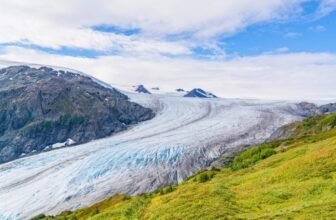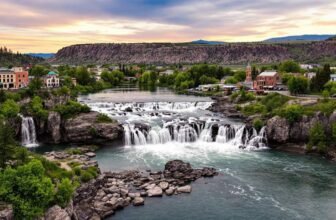
Something magnetic about the places furthest from everything, where the roads have been swallowed, where cell signals disappear, where the silence feels ancient. These are not tourist traps or Instagram hot spots.
Wind-scoured corners of the Earth that set your heart singing and your mind to rest. If you’ve experienced the itch to get away from the predictable and into places that seem untouched by time, you’re not alone.
This list is for people who need more than a holiday — it’s for people attracted to the end of the world. Ready or not, these are the places that will test you, reward you, and could even change you.
1. Bouvet Island, Norway
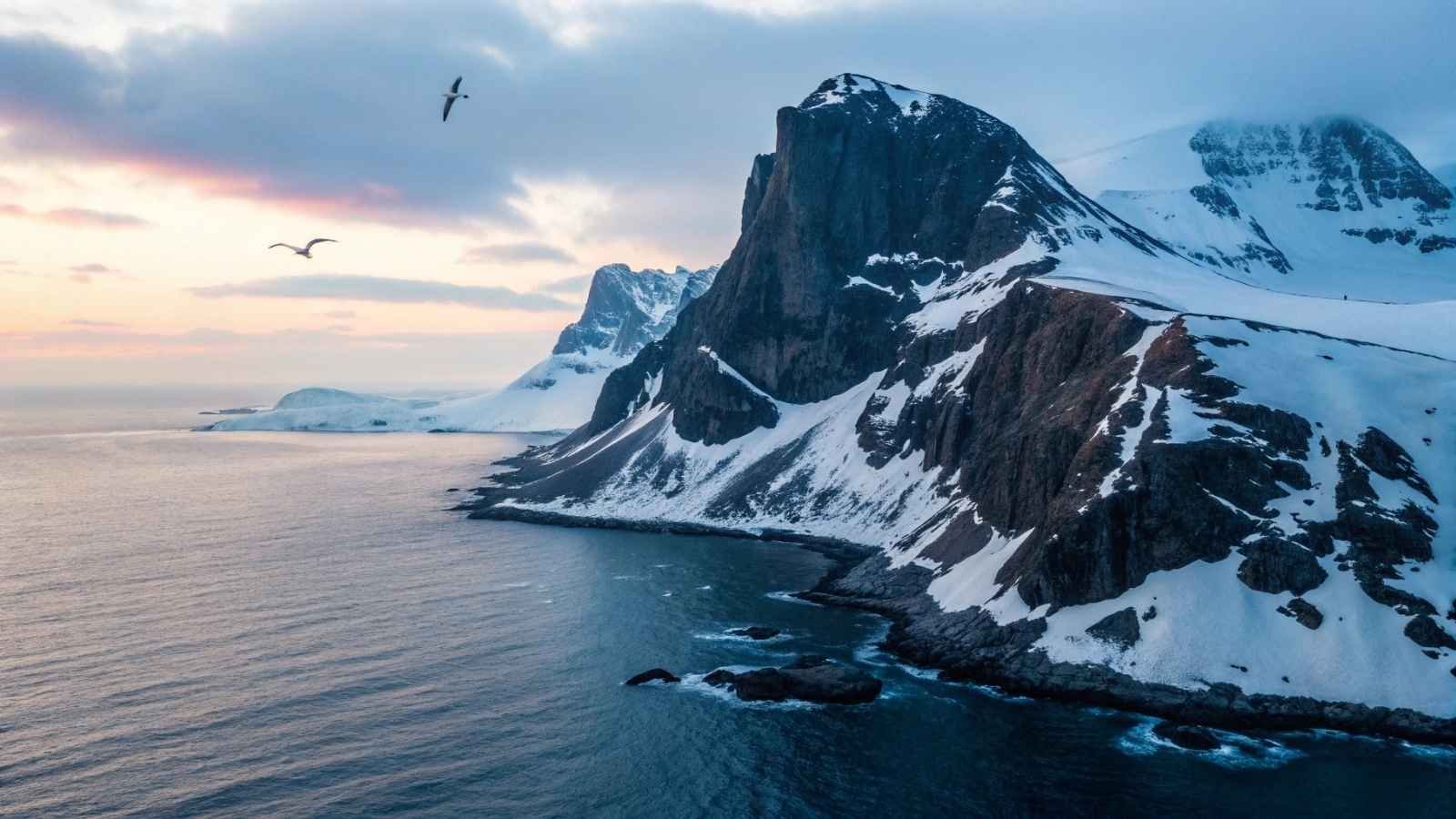
The title of the most remote island goes to Bouvet Island in the South Atlantic. This nature reserve is an uninhabited composite volcanic outcrop, over 1,000 miles from the nearest inhabited land. The island is a remote and difficult-to-access destination. Research vessels or specially chartered ships are most common and must brave harsh weather and rough seas.
A SHARP place, sure, but there’s something eerily beautiful about Bouvet. Its vast glaciers cloak nearly 93 percent of the island, and its sea cliffs shoot straight up from the ocean floor, pounded by the icy waves. Never mind hotels, locals, or even much wildlife beyond some seals and seabirds. But what you do get is something very few humans ever will: a visceral, silent awe of untouched nature.
Now, this isn’t your average vacation. Bouvet is for those with a taste for discomfort, adventure, and the bragging rights that come from visiting a place even Google Earth barely touches. You’ll need to join a polar expedition, have serious sailing connections, or fund your research mission. Yes—it’s that wild.
Relevant info:
- Best time to visit: December to February (Antarctic summer)
- Access: Only by special permit, usually with scientific expeditions
- Visa/Permit: Special permission from Norwegian authorities
- Nearest landmass: Queen Maud Land, Antarctica (~1,100 miles away)
- Travel note: Sea conditions can delay or cancel planned landings even after arrival
2. Quttinirpaaq National Park, Canada
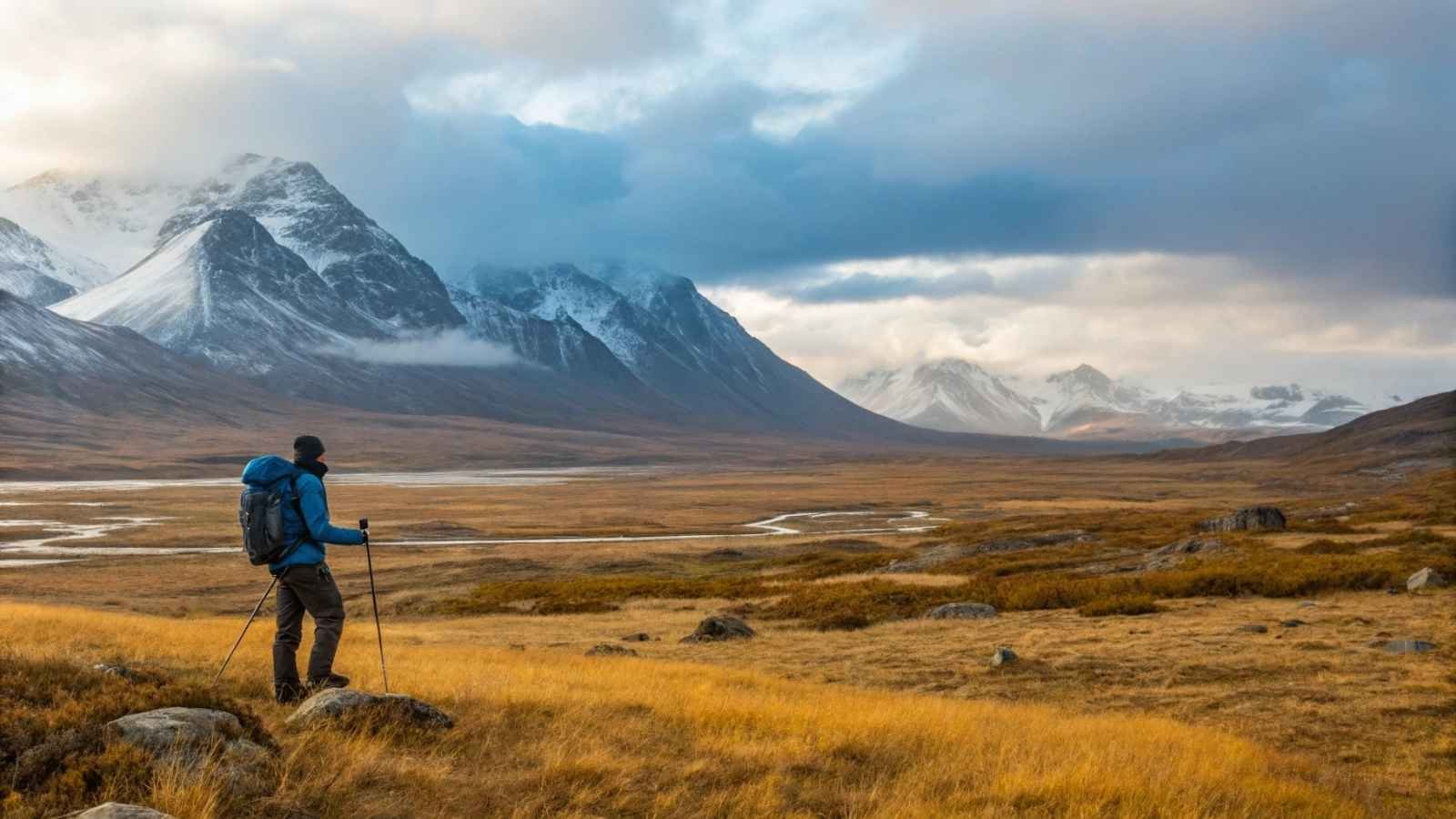
This one’s not just a park—it’s a stark, surreal expanse at the top of the world. Quttinirpaaq (Inuktitut for “top of the world”) expanded to become Canada’s second biggest national park, located on Ellesmere Island, and one of its most under-visited. We’re speaking of fewer than 50 visitors a year. It’s a realm where the sun never sets in summer and never rises in winter, and the Arctic stillness somehow seems more deafening than any city ever could.
There are no roads or other facilities here. You won’t hike through dense, verdant foliage; instead, you’ll traverse polar deserts, glacial valleys, and fjords that look like something out of a science fiction film. Wildlife sightings are possible — arctic wolves, musk oxen, and even the occasional polar bear — but it’s the dead silence that’s most memorable. No Wi-Fi. No service. Just you, the tundra, and the sky.
If you’re into remote hiking or long solo meditations on the fragility of existence (kidding, sort of), Quttinirpaaq delivers. You’ll need to fly into Resolute, charter a plane to the park, and carry everything in and out with you. This is true Arctic self-reliance territory.
Relevant info:
- Best time to visit: July to early August
- Access: Charter flight from Resolute Bay (Nunavut)
- Accommodation: None – backcountry camping only
- Park entry: Permit required via Parks Canada
- Nearest community: Grise Fiord (~500 km away)
3. Ittoqqortoormiit, Greenland

Pronounced “It-oh-kor-tor-mit,” this tiny East Greenlandic settlement is one of the most isolated towns on Earth, but also one of the most stunning. It is a small cluster of candy-colored houses in an otherwise largely white wilderness, in the nook near the entrance to Scoresby Sound, which is the world’s largest fjord system. It has a population of less than 400 and is encased in ice for nine months of the year.
There’s a pulse to the place, despite that. Gumilike 85 percent of itel’s customers, he was new to mobile devices, and itel saw him as an entry point into a largely untapped market. But those who make the journey here (you’ll have to fly to Iceland, take a second flight to East Greenland, and then either a helicopter or a boat) are richly rewarded with jaw-dropping Arctic beauty: icebergs, whales, the northern lights, and, above all, silence.
There’s even a small guesthouse, a local museum, and welcoming locals if you’re lucky enough to visit. If you’ve ever wanted to taste a sliver of real polar life—without needing to pitch a tent on a glacier—this is your spot.
Relevant info:
- Best time to visit: June to September
- Access: Flights from Iceland to Constable Point, then boat or helicopter
- Accommodation: Basic guesthouses are available
- Internet/cell service: Limited but available
- Wildlife: Polar bears, narwhals, whales
4. McMurdo Station, Antarctica
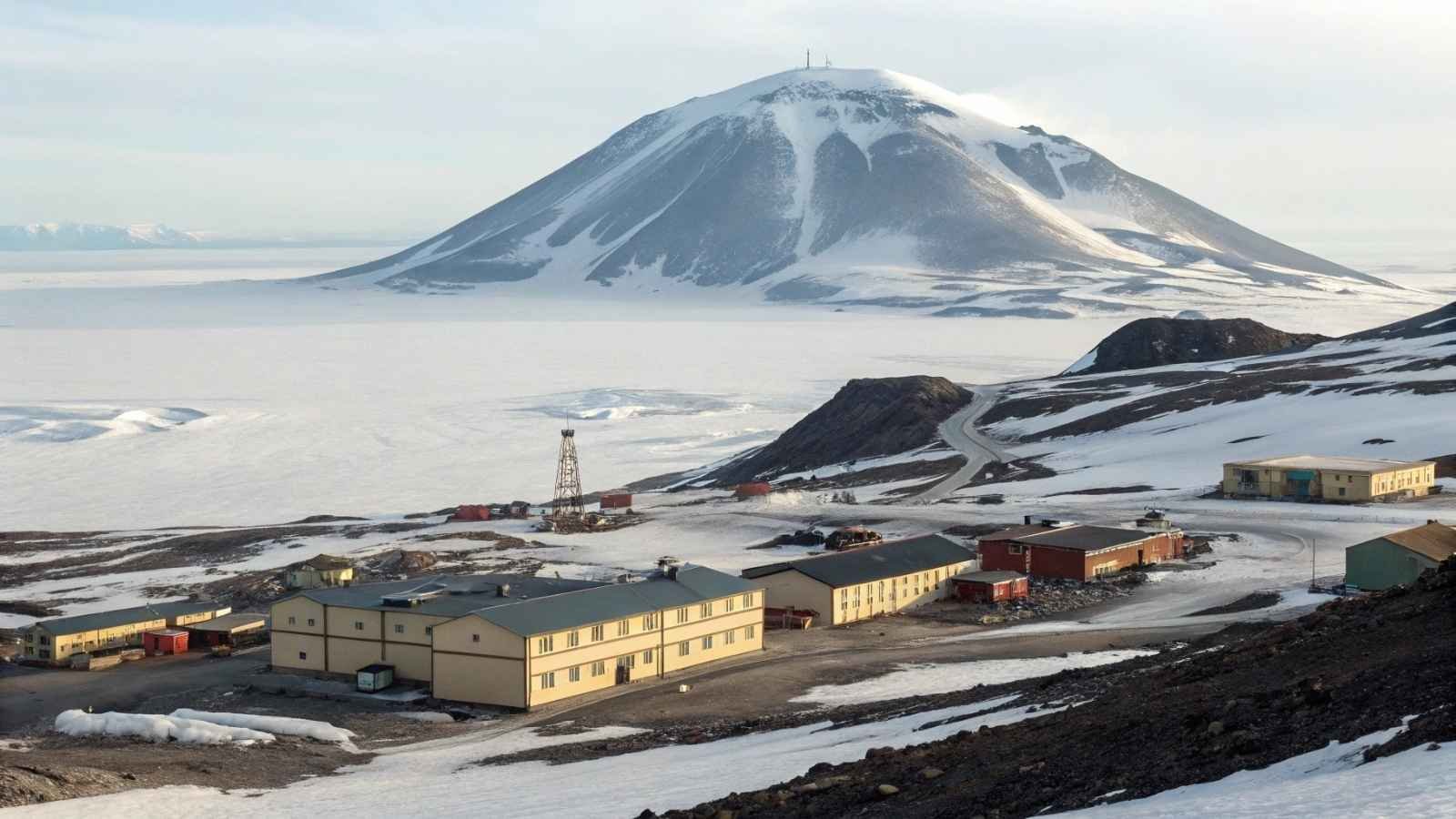
Yes, you can visit Antarctica — and not just on a cruise. It occurs at McMurdo Station, the largest research base on the continent, and in the world, for that matter, and it is an ultra-rare opportunity to see human life flourishing in one of the most inhospitable places on the planet. Sited on the southern extremity of Ross Island, it is the logistical hub of the U.S. Antarctic Program, and the maximum population can range from approximately 1,000 in the summer season to around 250 in winter.
McMurdo itself, though, isn’t a tourist destination, but you can check out Ross Island — and its surroundings — on icebreaker tours or private expeditions (some of which are educational and offer the chance to see the base, or even visit science stations on the continent). A frosty volcanic wasteland, the world’s most southerly post office, and penguins waddling past in subzero silence.
And yes, the cold is real, but so is the sense of wonder. Something is sobering and beautiful about being on the same landmass that once tried to kill Shackleton and still tests the mettle of modern explorers.
Relevant info:
- Best time to visit: November to February
- Access: Tour operators or scientific expedition participation
- Accommodation: Ships, camps, or limited base guest rooms (with permissions)
- Travel note: Strict environmental protocols apply
- Activities: Ice hikes, wildlife viewing, educational tours
5. The Kerguelen Islands, Indian Ocean (France)

Known as the Desolation Islands, the Kerguelens are a remote group of volcanic islands more than 2,000 miles from the closest continent. Technically a part of the French Southern and Antarctic Lands, they can only be accessed via a weeks-long research vessel from Réunion Island — and then only if you’re lucky.
But it’s the isolation that is the attraction. The landscape is characterized by black towering cliffs, tundra swept by the wind, and icy coves. There is no permanent civilian population on the main island, Grande Terre, only a rotating cast of scientists and the military. There are no airports, no hotels, no dumps — only naked, ragged nature, and the skeletons of former whaling stations, all that are left from the times of human habitation.
And Kerguelen has an odd sort of beauty, for all its bleakness. Tahoe’s weather goes cuckoo, albatrosses drift across the sky like ghosts, and mountains murmur with ancient silence. It’s the type of journey that requires a commitment — but provides one of the most memorable, unplugged experiences imaginable
Relevant info:
- Best time to visit: October to March
- Access: Via Marion Dufresne supply ship (4–6 weeks voyage)
- Accommodation: Scientific base lodging (with permission)
- Visa/Permit: Special authorization from French authorities
- Activities: Trekking, photography, wildlife observation
6. Tristan da Cunha, South Atlantic Ocean

The world’s most remote inhabited archipelago—Tristan da Cunha. This volcanic archipelago midway between South Africa and South America counts fewer than 250 hardy inhabitants overall, all living in a single village known as Edinburgh of the Seven Seas. There’s no airport, no fast food, and no rush hour. Nothing but the Atlantic, mountains, and sky.
Its people are descendants of British settlers, and life’s not bad at a placid, insular, self-reliant pace. Everybody knows everybody, and guests (few as they may be) are greeted with a blend of curiosity and warmth. The island’s crowning glory is the monarchically named Queen Mary’s Peak, a towering volcano you can hike when the weather allows, yielding views that seem to be from another planet.
Getting here is part of the adventure: a 6-day sea voyage from Cape Town on a cargo ship. No luxury cruise, no five-star service—just old-school travel and a sense that you’ve truly stepped off the grid.
Relevant info:
- Best time to visit: December to March (summer)
- Access: By sea from Cape Town (several trips per year)
- Accommodation: Home stays and guest houses
- Permits: Required from the Tristan Government before travel
- Activities: Volcano hikes, birdwatching, cultural immersion
7. Gough Island, South Atlantic

Uninhabited by humans but teeming with wildlife, Gough Island is one of the world’s last truly untouched ecosystems. Designated a UNESCO World Heritage Site, it belongs to the Tristan da Cunha group but is even more remote. Access is so rare that only a handful of scientists and conservationists get to stay here annually.
Rugged cliffs, crashing waves, and dozens of species of seabirds make Gough feel like something out of a lost world. It’s inhospitable yet magnetic, wild yet oddly peaceful. If you manage to land (which is very difficult), you’ll see seals sunbathing on rock ledges and birds nesting in complete freedom, untouched by tourism or development.
Visits require serious planning, permits, and usually a scientific or conservation connection. It’s one of the last places where you can witness what Earth looked like before humans left a mark.
Relevant info:
- Best time to visit: October to March (weather still harsh)
- Access: Via ship from Tristan da Cunha (by special arrangement)
- Accommodation: None – camping not allowed
- Permits: Strictly regulated by the Tristan Government & conservation agencies
- Activities: Wildlife observation (restricted), scientific research
8. Easter Island (Rapa Nui), Chile
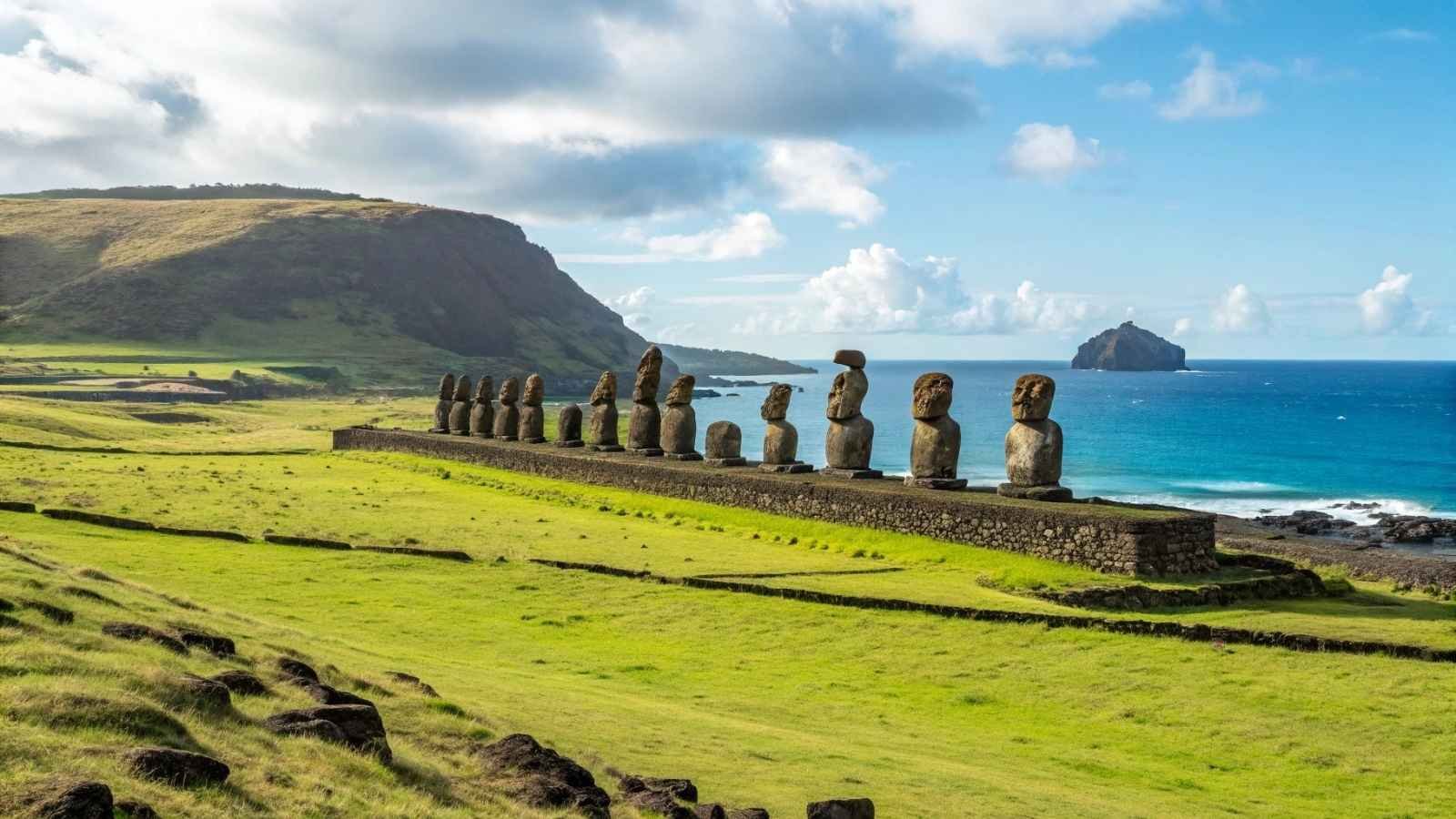
Easter Island is a place of mystery and magic that has long drawn explorers from around the world. It’s more than 2,000 miles from mainland Chile, but thousands make the pilgrimage annually to see the inscrutable moai statues, carved by the Rapa Nui people centuries ago. What makes it remote is not just where it is — it’s the feeling of the ancient silence in the air.
The volcanic landscape is dramatic — blackened craters, crashing waves, wind-swept plains that feel like they hum with legend. Though the town of Hanga Roa is perfectly civilized — paving, restaurants, hotels, even Wi-Fi — the second you step out of it, you’re surrounded by a landscape that couldn’t care less about time.
Unlike some others on this list, Easter Island is visitable by commercial flight, making it the most accessible of the “inaccessible” places—perfect if you want that edge-of-the-world feeling without signing up for an expedition.
Relevant info:
- Best time to visit: April to June or October to December (fewer tourists, mild weather)
- Access: Flights from Santiago (Chile)
- Accommodation: Ranges from luxury resorts to guesthouses
- Permits: Required for Rapa Nui National Park entry
- Activities: Archaeological sites, hiking, cultural shows
9. Socotra Island, Yemen

Socotra is one of the most otherworldly places on the planet — and we say that in a good way. Featuring enormous mushrooms out of a fantasy novel. More than a third of its plant life grows nowhere else on the planet, giving the whole island an alien quality.
Socotra has been relatively safe for travelers despite Yemen’s notorious turmoil, due to its isolation. Teenagers from the village were offering to escort us into the gorge, about 2 miles away, for a few dollars per person, and tourists had begun flocking to the region aboard charter flights from the U.A.E. and Egypt, drawn by the unique biodiversity, pristine beaches, and Martian landscapes.
You’ll find no chain hotels or overdevelopment here. Just basic guesthouses, traditional foods, and a strong sense of local pride. It’s remote, surreal, and unforgettable.
Relevant info:
- Best time to visit: October to April (dry season)
- Access: Charter flights from Cairo or Abu Dhabi
- Accommodation: Basic eco-lodges and home stays
- Permits: Yemeni visa and Socotra-specific entry clearance required
- Activities: Trekking, snorkeling, cave exploration, photography
10. Devon Island, Canada

The largest uninhabited island on Earth, Devon Island in the Canadian Arctic, is a cold, dry, rocky expanse that is — as one NASA scientist put it — so similar to Mars that the space agency has used it for astronaut training. There are no permanent residents, no trees, and almost no life besides some hardy lichens and the occasional musk ox — but that’s the point of the appeal.
The scene is raw, rough-hewn and uncannily quiet, sculptured by glaciers and littered with what look like meteorites. Its Haughton Impact Crater is especially well-known—it is nearly identical in geology to that found on Mars, so in addition to being a beautiful but haunting “surrogate Martian landscape,” it’s a scientific treasure trove.
Getting to Devon requires serious logistics—chartered flights and expedition-grade gear—but a handful of hardy adventure groups do make the trip. It’s a destination that’ll make you feel like you’ve left Earth without ever leaving Canada.
Relevant info:
- Best time to visit: July to early August
- Access: Charter from Resolute Bay (Nunavut)
- Accommodation: None – tent camps with expedition teams only
- Permits: Required via Parks Canada and research approvals
- Activities: Trekking, geology, photography, stargazing
11. Danakil Depression, Ethiopia
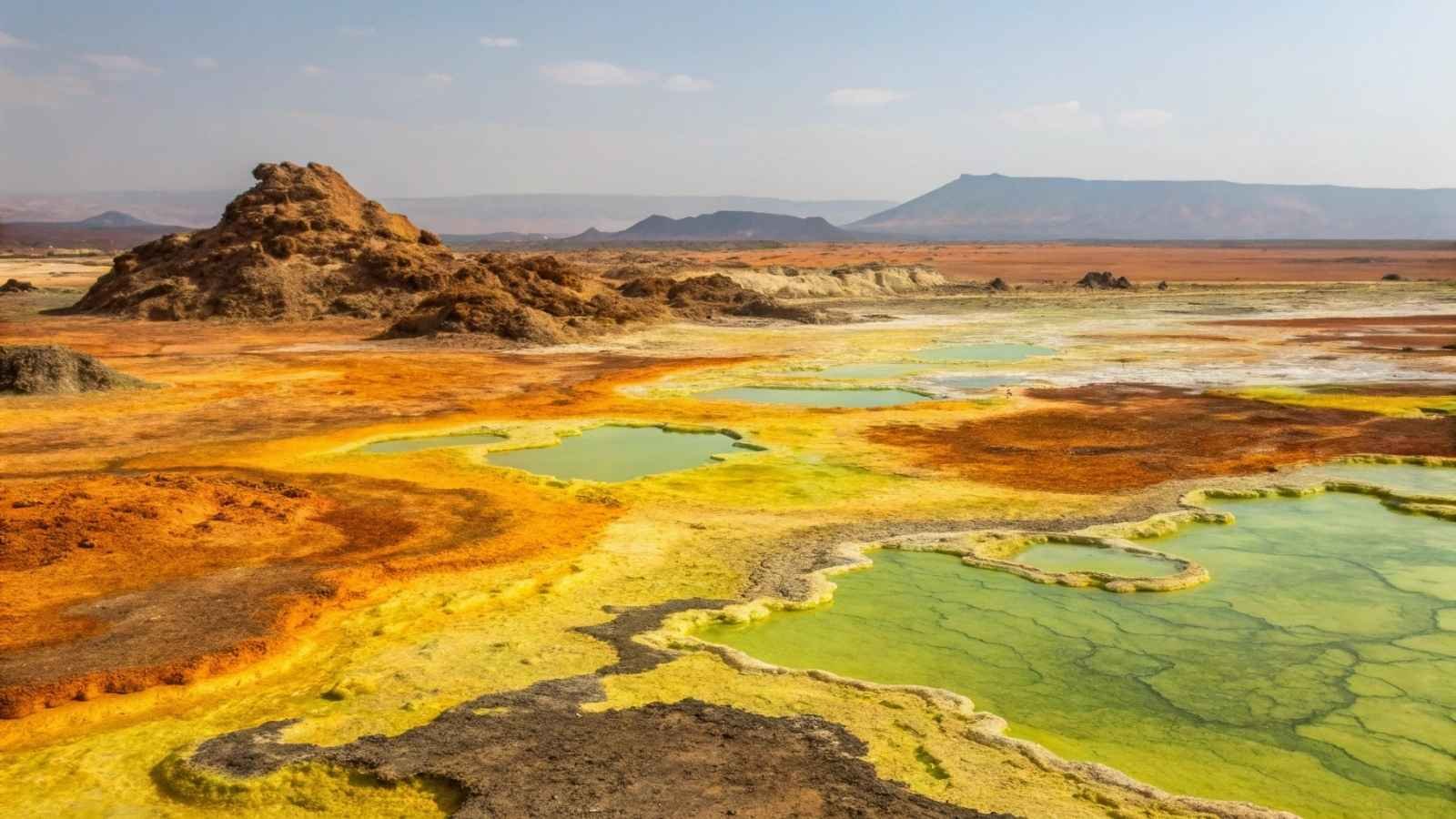
The Danakil Depression is not only remote, it’s otherworldly. One of the hottest, driest and lowest places on the planet, the Danakil Depression in northeastern Ethiopia near the border with Eritrea has temperatures at or above 45°C (113°F) by day. But for all the searing heat, it is jaw-droppingly beautiful: neon-colored acidic pools, miles of salt flats, volcanoes that belch fire and smoke.
For centuries, the Afar people have harvested salt there in traditional camel caravans. Travelers lucky enough to visit (it’s typically done on a guided day tour from Mekele) usually say the landscape is otherworldly, something that belongs on Jupiter, not Earth. The life that does survive here — human, animal, or microbial — is wondrous.
This is not a destination for casual sightseeing. It’s challenging, remote, and can be physically punishing. But for travelers who want to push the boundaries of where humans can go, the Danakil rewards with scenes that etch themselves into memory.
Relevant info:
- Best time to visit: November to February (coolest months)
- Access: Tours from Mekele, via 4×4 vehicles
- Accommodation: Rustic campsites, limited basic lodges
- Permits: Required; usually handled by tour operators
- Activities: Volcano trekking, salt flats, Dallol acid springs
12. Crescent Lake, Gobi Desert, China
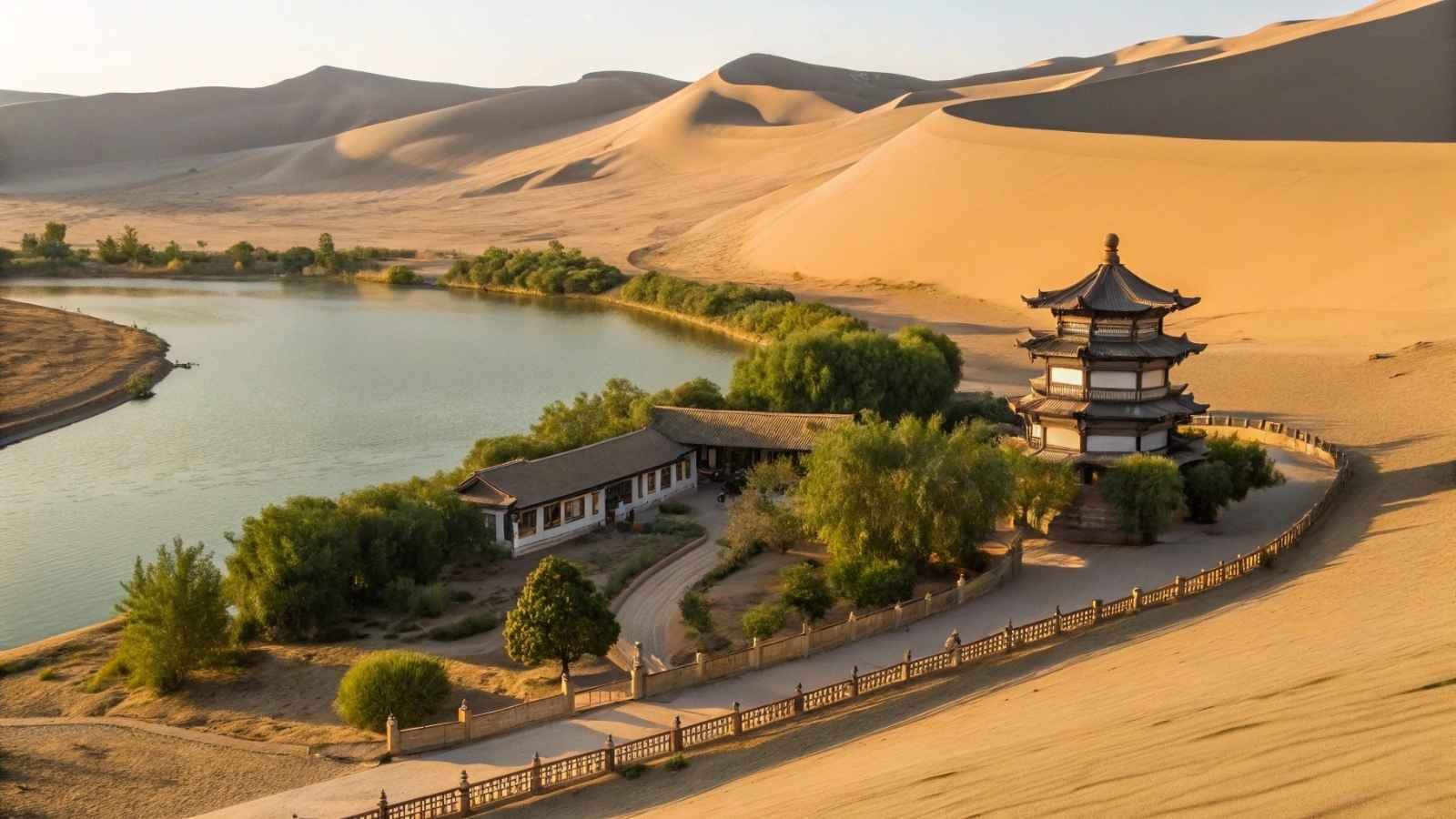
Among the vast sand dunes of China’s enormous Gobi Desert, where such dunes rip apart like frozen waves on an ocean of sand, nature has one further miracle to offer: a plump, perfectly crescent-shaped oasis that has existed for millennia. DUNHUANG, China — Crescent Lake, outside the city of Dunhuang, is a small wonder of geography — a slender bit of water and green fronds snugged amid windswept golden dunes.
What really makes it so mesmerizing is the juxtaposition. On one side, blistering desert heat and stillness; on the other, an ancient Buddhist town of pagodas, camel rides, and remnants of the old Silk Road. Travelers come dusty and windblown, and they go enchanted by the serenity of this unlikely paradise.
And for as accessible as it is (by Gobi standards, at least; there’s some infrastructure around it), it’s still situated in the emptiness of the Gobi, in which even the winds are few and far between. It’s not merely a stop — it’s an experience of time bending and slowing.
Relevant info:
- Best time to visit: April to October (spring and fall are best)
- Access: Flights or trains to Dunhuang, a short drive to the site
- Accommodation: Hotels and guesthouses in Dunhuang
- Entry: Modest entry fee to scenic area
- Activities: Dune climbing, camel rides, temple visits
13. Barra Island, Scotland

Yep, Scotland made the cut — and deservedly so. Barra is one of the windswept Outer Hebrides, where the countryside composes in poetry and the sea whispers in Hushes. It’s remote but manageable — there is even a plane that lands right on the beach, provided the tides cooperate. But once you’re there, it’s the silence that knocks you out. That, and the scent of the air, faintly salt and heather.
You will come upon castles that lone-stand by the side of lochs, white sand beaches where you may have the entire stretch to yourself, and hills that, in the light of late-afternoon sun, catch alight in a way that seems out of a folk tale. The people here are friendly, the pace is leisurely and the horizon is always just within reach.
Barra is evidence that remoteness is not necessarily synonymous with such extreme drama. The answer, sometimes, is just out of the noise long enough to hear your own thoughts compared to all the racket.
Relevant info:
- Best time to visit: May to September (mild and bright)
- Access: Ferry from Oban or beach-landing flight from Glasgow
- Accommodation: Charming B&Bs, self-catering cottages
- Getting around: Rent a bike or walk—it’s small!
- Activities: Beach walks, historical ruins, kayaking, seafood feasts
14. Apolima Island, Samoa
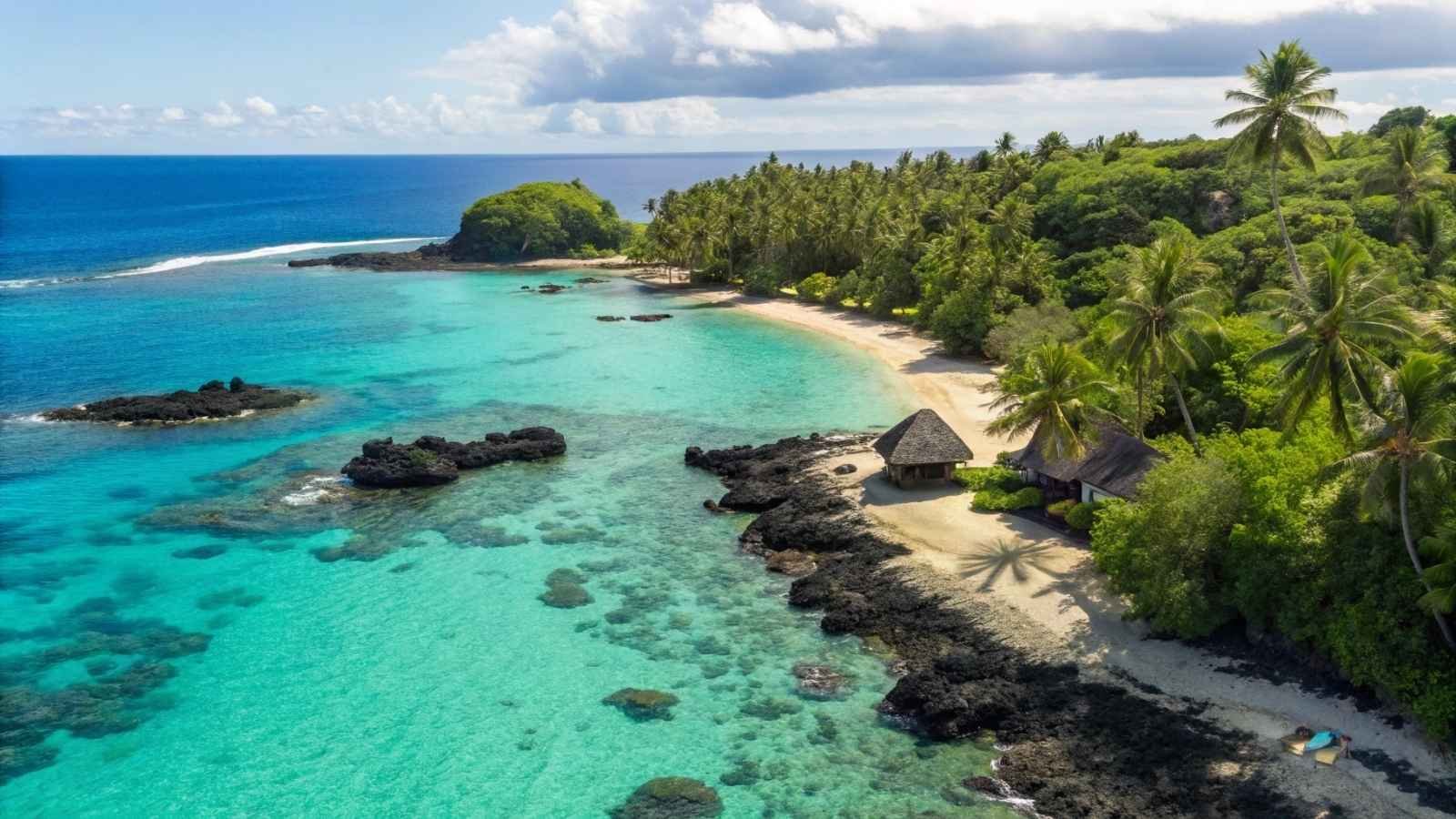
And finally—Apolima. A small, round volcano surrounded by larger Samoan islands, Upolu and Savai’i, Apolima is inhabited by only one village and fewer than 100 residents. Encircled by cliffs and clear-as-a-bell water, it’s a place that seems to have opted out of time sucker altogether.
There are no hotels, no roads, and absolutely no schedule. Small boats arrive by the visitor on days one waits for the right weather, and visitors are generally greeted by children who are curious and the smell of baking breadfruit. Life here is set to the rhythm of the tides and the setting sun.
You can stay in a local’s home, eat what’s caught or grown on the island, and spend your days doing nothing in the most fulfilling way you can imagine. It’s not just remote — it’s rejuvenating.
Relevant info:
- Best time to visit: May to October (dry season)
- Access: Boat from Manono or Savai’i (arranged locally)
- Accommodation: Village homestays (by prior arrangement)
- Language: Samoan (some English spoken)
- Activities: Snorkeling, fishing, hammock time, village life



